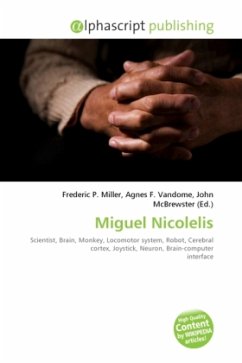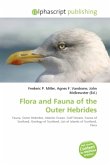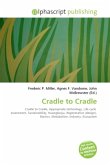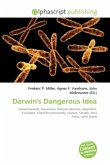High Quality Content by WIKIPEDIA articles! Miguel Angelo Laporta Nicolelis, MD, PhD, is a Brazilian physician and scientist, best known for his pioneering work in "reading monkey thought". He and his colleagues implanted electrode arrays into a monkey's brain that were able to detect the monkey's motor intent and thus able to control reaching and grasping movements performed by a robotic arm. This was possible by decoding signals of hundreds of neurons recorded in volitional areas of the cerebral cortex while the monkey played with a hand-held joystick to move a shape in a video game. These signals were sent to the robot arm, which then mimicked the monkey's movements and thus controlled the game. After a while the monkey realised that thinking about moving the shape was enough and it no longer needed to move the joystick. So it let go of the joystick and controlled the game purely through thought. A system in which brain signals directly control an artificial actuator is commonly referred to as brain-machine interface or brain-computer interface. On January 15, 2008, Dr.
Bitte wählen Sie Ihr Anliegen aus.
Rechnungen
Retourenschein anfordern
Bestellstatus
Storno








